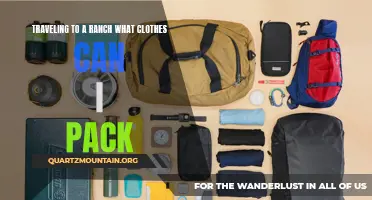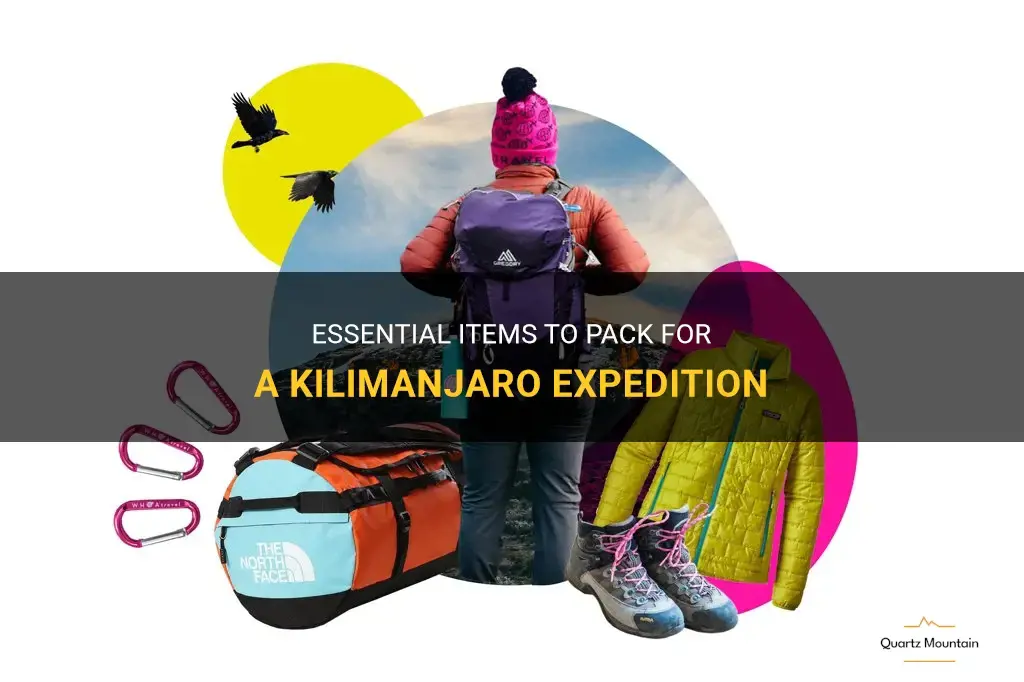
Are you planning to embark on a thrilling adventure to conquer the magnificent Kilimanjaro? If so, you're in for an unforgettable journey! However, to ensure a successful and enjoyable expedition, it is vital to be well-prepared with the essential items. In this guide, we will explore the crucial gear and supplies you must pack before setting foot on the challenging terrain of Africa's highest peak. From sturdy hiking boots to high-tech layers, we'll equip you with everything you need for a safe and comfortable Kilimanjaro expedition. So, get ready to take on the adventure of a lifetime as we unveil the essential items to pack for a Kilimanjaro expedition!
What You'll Learn
- What are the essential items to pack for a Kilimanjaro trek?
- Are there any specific clothing items that should be included in the packing list?
- What kind of footwear is recommended for climbing Kilimanjaro?
- Is there any specific equipment or gear that is required for the trek?
- Are there any additional items that may be useful to pack for the Kilimanjaro climb?

What are the essential items to pack for a Kilimanjaro trek?
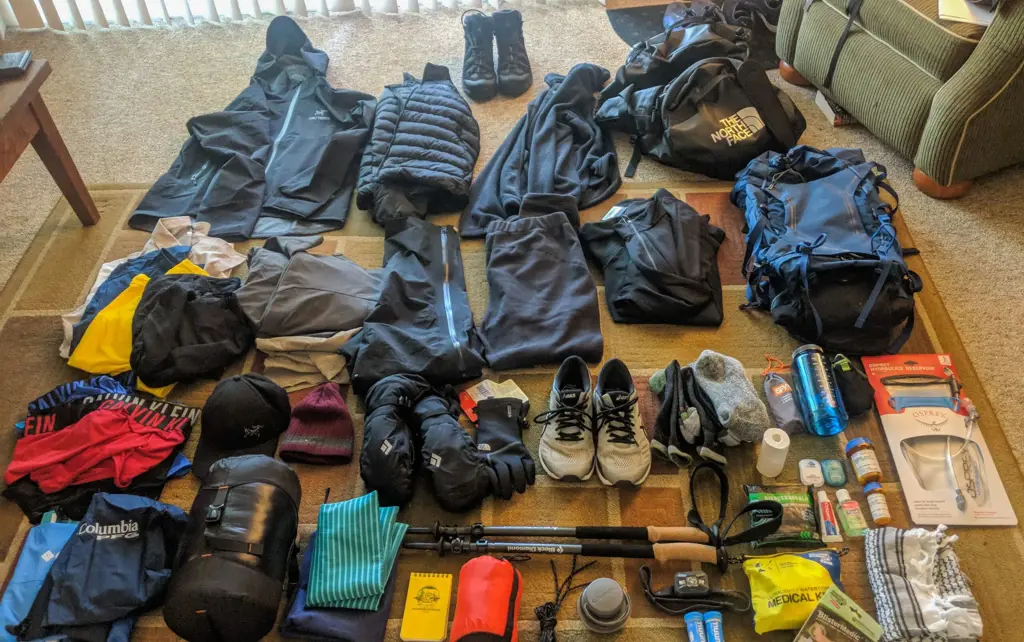
If you are planning a trek up Mount Kilimanjaro, one of the most important things you need to consider is packing the right gear. As Africa's highest peak and one of the most challenging climbs in the world, Kilimanjaro requires careful planning to ensure a successful and safe journey to the summit. Here are some essential items you should pack for a Kilimanjaro trek:
Clothing:
- Base layers: Lightweight and moisture-wicking base layers are crucial for regulating body temperature during the varying weather conditions on the mountain. Opt for synthetic or merino wool fabrics that dry quickly and retain warmth even when wet.
- Insulating layers: Fleece jackets or down-filled parkas are essential for keeping you warm during the cold nights and high altitudes. Layering is key to adapting to changing temperatures, so pack a variety of insulating options.
- Waterproof shell: A good-quality, waterproof and breathable jacket will protect you from rain, wind, and snow. Look for a jacket with a hood and adjustable cuffs to keep you dry and comfortable.
- Hiking pants: Choose lightweight, quick-drying pants with zip-off legs for versatility. Consider models that have reinforced knees and seat for added durability.
- Thermal underwear: Long underwear or thermal leggings and tops are important for extra insulation during the cold nights at higher altitudes.
Footwear:
- Hiking boots: Invest in sturdy, waterproof hiking boots that provide ankle support and are broken in before your trek. Look for boots with good traction and a comfortable fit.
- Socks: Bring a sufficient number of thick, moisture-wicking socks to keep your feet warm and dry. Merino wool or synthetic blends are recommended to prevent blisters and manage moisture.
Accessories:
- Sunglasses: Protect your eyes from the intense sunlight at higher altitudes with high-quality sunglasses that offer UVA and UVB protection. Glacier glasses or wrap-around styles are ideal.
- Gloves: Pack insulated and waterproof gloves to keep your hands warm and protected from the elements. Consider bringing a thin liner pair for added dexterity.
- Hat: A warm, fleece or wool beanie hat is essential for retaining heat and protecting your head from the cold. Additionally, bring a sun hat with a wide brim to shield your face and neck from the sun.
- Headlamp: A lightweight, durable, and waterproof headlamp is necessary for early morning starts and navigating in the dark. Make sure to bring extra batteries.
- Trekking poles: These adjustable poles provide stability and support, reducing strain on your joints and aiding in balance on steep sections. Choose lightweight, collapsible poles for easier packing.
Sleeping Gear:
- Sleeping bag: Invest in a good-quality, 3-season sleeping bag that is rated for temperatures well below freezing. Make sure it is lightweight, compact, and has a comfortable fit for a good night's sleep.
- Sleeping pad: A lightweight inflatable or foam sleeping pad will provide insulation and cushioning against the cold ground. Opt for a model that is comfortable and packs down small.
Hydration and Nutrition:
- Water bottles or hydration bladder: Stay hydrated along the trek by carrying at least two liters of water with you. Consider using a hydration bladder for easy access while hiking.
- Snacks and meals: Pack high-energy, lightweight snacks such as nuts, energy bars, and dried fruit. Carry enough food for the duration of your trek, including breakfast, lunch, and dinner options.
- Water purification tablets: In case you run out of clean water, carry water purification tablets to be able to treat water from mountain streams.
Remember, it is essential to pack light and only bring what is necessary. Kilimanjaro is a challenging trek, and every ounce in your backpack counts. Prioritize items that are versatile, lightweight, and functional. Also, ensure you have appropriate travel insurance and consult with a trekking specialist for any specific gear recommendations for your Kilimanjaro adventure.
Essential Items for a Memorable 1 Day School Trip
You may want to see also

Are there any specific clothing items that should be included in the packing list?
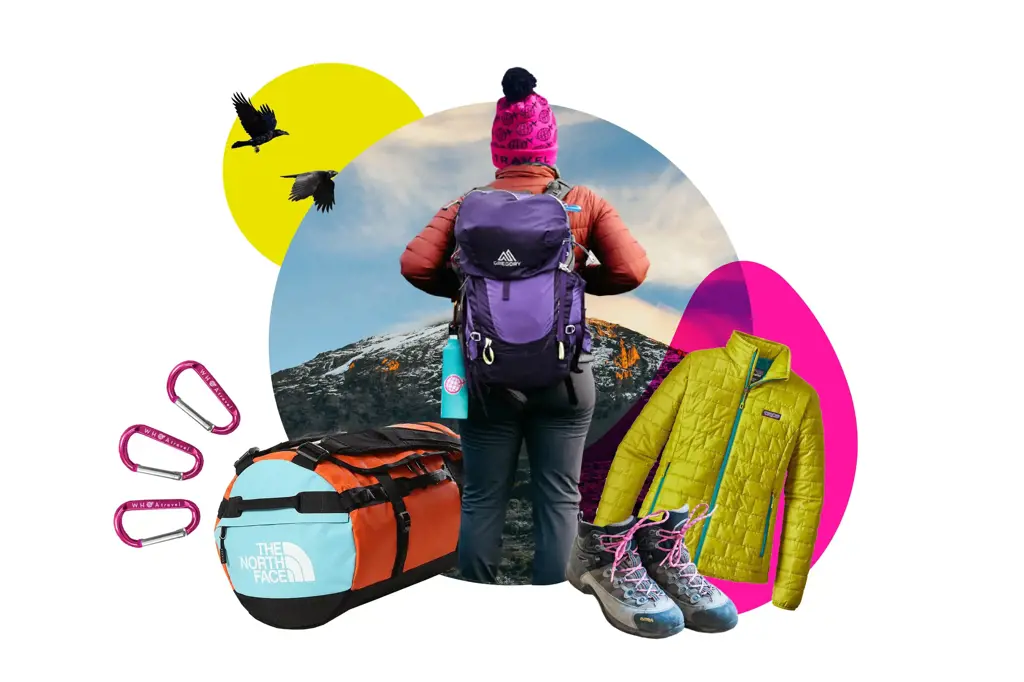
When packing for a trip, it is important to consider the specific clothing items that should be included in your packing list. Depending on the destination and activities planned, certain clothing items may be more appropriate than others. Here are some recommendations for what to include in your packing list:
- Comfortable walking shoes: Whether you are exploring a new city or hiking in nature, comfortable shoes are a must. Look for shoes that provide support and cushioning to avoid discomfort or injury.
- Weather-appropriate clothing: Consider the climate of your destination and pack accordingly. If you are traveling to a warm destination, pack lightweight and breathable clothing such as shorts, t-shirts, and dresses. For colder climates, pack layers such as sweaters, jackets, and long-sleeve shirts.
- Swimwear: If your travel destination includes a beach or pool, don't forget to pack your swimsuit. It is also a good idea to pack a cover-up or sarong for added versatility and protection from the sun.
- Formal attire: If you have any formal events or dinners planned, make sure to pack appropriate attire such as a dress or suit. It is always better to be prepared for any occasion that may arise during your trip.
- Versatile clothing: Pack clothing items that can easily be mixed and matched to create multiple outfits. This will help you save space in your suitcase and give you more options while on your trip. Look for versatile pieces such as a pair of jeans, a neutral-colored skirt or pants, and basic tops that can be dressed up or down.
- Outerwear: Depending on the season and destination, you may need to pack a light jacket, raincoat, or sweater. It is always a good idea to have some form of outerwear to protect yourself from unexpected weather conditions.
- Accessories: Don't forget to pack accessories such as hats, sunglasses, scarves, and jewelry. These items can add a personal touch to your outfits and also provide additional functionality such as sun protection or warmth.
- Undergarments and socks: Remember to pack enough underwear and socks for the duration of your trip. It is also a good idea to pack a few extra pairs in case of emergencies or unexpected delays.
- Workout clothing: If you plan on exercising during your trip, pack appropriate workout clothing such as athletic shorts, leggings, and moisture-wicking tops. Don't forget to pack a pair of sneakers specifically designed for exercise.
- Laundry essentials: If you are traveling for an extended period of time, consider packing some laundry essentials such as travel-sized detergent or laundry sheets. This will allow you to wash your clothes as needed and reduce the amount of clothing you need to bring.
Remember to consider the specific activities and climate of your destination when determining what clothing items to include in your packing list. It is always better to be prepared and have the appropriate clothing for any situation that may arise during your trip. Happy travels!
Essential Items to Pack for Your Cuba and Mexico Vacation
You may want to see also

What kind of footwear is recommended for climbing Kilimanjaro?
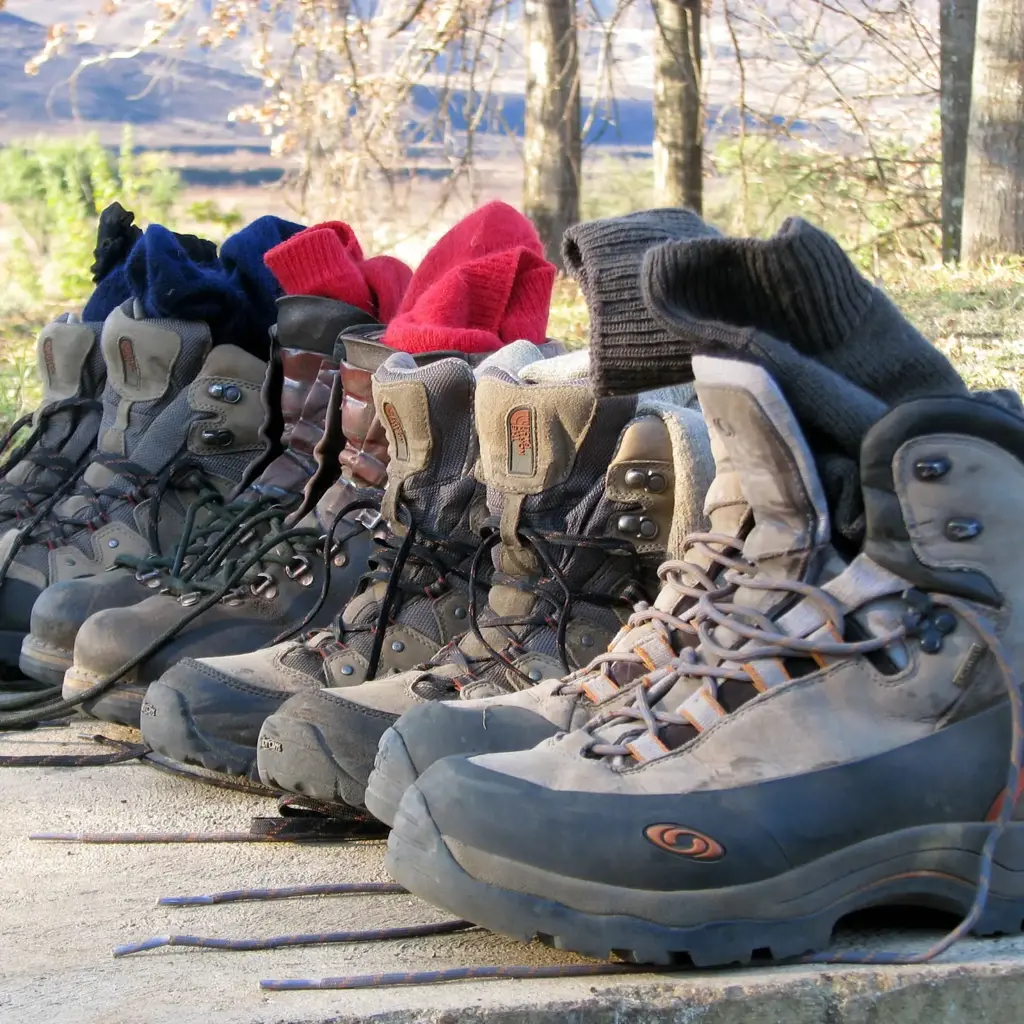
When it comes to climbing Mount Kilimanjaro, proper footwear is crucial. The right pair of shoes can make all the difference in your comfort and safety while tackling the challenging terrain. Considering the diverse ecosystems and weather conditions encountered on the mountain, it is important to choose footwear that is suitable for all situations.
Hiking boots are the most popular and widely recommended choice for climbing Kilimanjaro. These boots provide the necessary ankle support and protection required for traversing rocky and uneven paths. Look for boots with a stiff sole and a good grip to ensure stability on slippery surfaces. It is essential to break in your boots before your climb to prevent blisters and discomfort during the trek.
Waterproof boots are also highly recommended for climbing Kilimanjaro. The mountain's unpredictable weather can result in rain or snow, making waterproof footwear a smart choice. Wet feet can lead to blisters and discomfort, so investing in a pair of waterproof boots is well worth it.
Additionally, it is advisable to bring a pair of gaiters to protect your boots from the elements. Gaiters are designed to cover the lower part of your legs and the top of your boots, providing an extra layer of protection against water, snow, and debris.
Another consideration when choosing footwear for Kilimanjaro is insulation. As you ascend the mountain, temperatures drop significantly. Opt for boots that offer insulation to keep your feet warm in freezing conditions. Ensure that your boots are compatible with thick, thermal socks to maximize comfort and warmth.
It is important to note that crampons are not required for most routes on Kilimanjaro. Crampons are attachments that provide traction on icy surfaces, commonly used in mountain climbing. However, unless you are attempting the challenging Western Breach Route or climbing during the winter months, crampons are not necessary. A good pair of sturdy hiking boots with a good grip will be sufficient for the majority of the climb.
Ultimately, the most important aspect of choosing footwear for climbing Kilimanjaro is ensuring a proper fit. Ill-fitting shoes can lead to discomfort, blisters, and even injuries. We recommend visiting a reputable outdoor store to have your feet measured and to receive professional advice on the best shoe options for your specific needs.
In conclusion, climbing Mount Kilimanjaro requires suitable footwear that provides ankle support, protection, and traction. Waterproof and insulated boots are ideal for the varying weather conditions encountered on the mountain. Remember to break in your boots before the climb and consider investing in gaiters for added protection. As long as you choose a pair of boots that are comfortable and fit well, you will be well-prepared for the adventure that awaits you on Kilimanjaro.
What to Pack for Camp: Essential Items for a Great Outdoor Experience
You may want to see also

Is there any specific equipment or gear that is required for the trek?

Trekking is a popular outdoor activity that involves walking long distances through natural landscapes such as mountains, forests, and deserts. It requires physical fitness, mental strength, and the right gear to ensure a safe and enjoyable experience. While the specific equipment and gear required for a trek may vary depending on factors such as the terrain, climate, and duration of the trek, there are some essential items that every trekker should have.
- Backpack: A good-quality backpack is essential for carrying all your gear and supplies during the trek. Look for a backpack that is spacious, lightweight, and comfortable to wear. It should have adjustable straps and a hip belt for proper weight distribution.
- Hiking boots: Choosing the right pair of hiking boots is crucial for a trek. Look for boots that provide ankle support, have a good grip on the sole, and are waterproof. Properly fitted boots will help prevent blisters and injuries during the trek.
- Clothing: Dressing in layers is important to adapt to changing weather conditions. Carry moisture-wicking base layers to keep you dry and comfortable. Pack a warm insulated jacket, waterproof outer shell, and quick-drying pants. Don't forget to bring extra socks and underwear.
- Sleeping bag and tent: If you are planning an overnight trek, it is essential to have a good-quality sleeping bag and tent. Look for a sleeping bag that provides adequate insulation and is suitable for the expected temperature range. Choose a lightweight and easy-to-assemble tent that offers protection from the elements.
- Navigation tools: Carry a detailed map of the area and a compass to navigate through unfamiliar terrain. GPS devices and mobile apps can also be helpful, but always carry a backup in case of battery failure or lack of signal.
- Water and food: Staying hydrated and well-nourished is crucial during a trek. Carry a sufficient amount of water and pack lightweight, high-energy snacks such as nuts, trail mix, and energy bars. It is also important to carry a water purification system or tablets to ensure access to safe drinking water.
- First aid kit: Accidents and injuries can happen during a trek, so it is important to carry a well-equipped first aid kit. Include items such as bandages, antiseptic ointment, pain relievers, blister tape, and any personal medication.
- Headlamp or flashlight: Whether you are trekking during the day or night, it is important to carry a headlamp or flashlight. This will help you navigate in low-light conditions and can be a lifesaver in emergencies.
- Trekking poles: Trekking poles can provide stability and reduce stress on your joints, especially when trekking over uneven or steep terrain. They are particularly useful during long and challenging treks.
- Personal items: Don't forget to carry personal items such as sunscreen, insect repellent, a hat, sunglasses, and a multi-tool or knife. These items can help protect you from the sun, bugs, and provide utility in various situations.
Before heading out on a trek, it is important to research the specific requirements and recommendations for the area you will be trekking in. Check with local authorities for any permits or restrictions and always inform someone about your planned route and estimated return time. By being well-prepared and equipped, you can ensure a safe and enjoyable trekking experience.
Essential Items to Pack for a Memorable Vacation at Bald Head Island
You may want to see also

Are there any additional items that may be useful to pack for the Kilimanjaro climb?
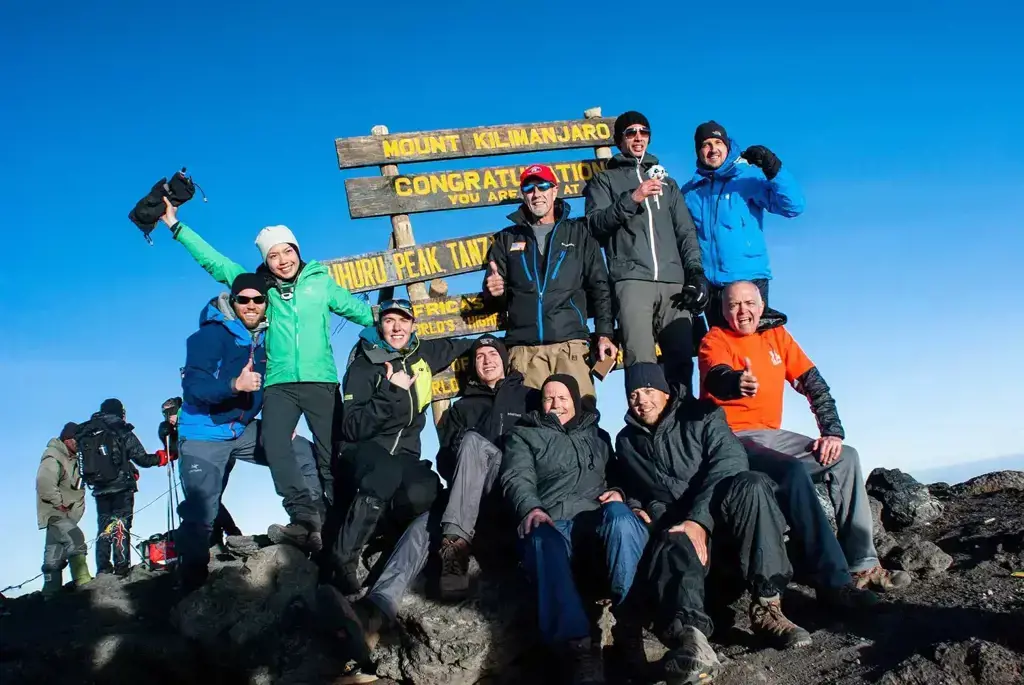
Climbing Mount Kilimanjaro is an unforgettable adventure, but proper preparation is crucial to ensure a safe and enjoyable experience. While you may have already packed all the essential items for your climb, there are a few additional items that can make your journey even more comfortable and convenient. Here are some suggestions to consider when packing for your Kilimanjaro climb:
- Trekking Poles: Trekking poles provide stability and support while navigating the challenging terrain of Mount Kilimanjaro. They help distribute weight and reduce strain on your knees and ankles, allowing for a more balanced and controlled ascent. Invest in a sturdy pair of lightweight trekking poles to aid your progress and prevent unnecessary fatigue.
- Portable Power Bank: A reliable power bank is essential for charging your electronic devices such as cameras, smartphones, and GPS devices. While most Kilimanjaro routes offer limited access to electricity, having a portable power bank ensures that you can capture those precious memories and stay connected throughout your climb.
- Water Purification Tablets: It's vital to stay hydrated during your climb, and having access to clean drinking water is essential. While your tour operator will provide boiled water and water purification systems at the campsites, carrying your own water purification tablets adds an extra layer of safety. These tablets can effectively eliminate harmful bacteria and viruses, ensuring that you have access to safe drinking water at all times.
- Dry Bags: Kilimanjaro's unpredictable weather can range from scorching heat to heavy downpours. To protect your essential gear from moisture, it's recommended to pack your belongings in dry bags or waterproof sacks. These waterproof storage solutions not only protect your belongings from rain but also keep your gear organized and easily accessible.
- Buff or Bandana: Mount Kilimanjaro's high altitude exposes climbers to strong winds and intense sun rays. A buff or bandana can provide protection for your face, neck, and head against these elements. It can also be used as a sweatband, scarf, or as a makeshift facemask if needed.
- Battery-operated Hand Warmers: As you ascend to higher altitudes, the temperature drops significantly. Battery-operated hand warmers can provide much-needed warmth during cold nights and chilly mornings. They can be easily activated and provide heat for several hours, keeping your hands comfortable and functional.
- Spare Batteries: Extreme temperatures and high altitudes can drain battery life faster than usual. It's essential to carry spare batteries for your electronic devices to ensure they remain functional throughout your climb. These spare batteries can make a significant difference when capturing those breathtaking views or finding your way using a GPS device.
- Duct Tape: Duct tape is a versatile and multi-purpose tool that can come in handy during unexpected gear or equipment repairs. From fixing a torn tent or backpack to patching up a leaking water bottle, duct tape can be a temporary but effective solution to keep essential items functional.
Remember, every ounce matters when climbing Mount Kilimanjaro, so be mindful of the weight and necessity of each item you pack. Consult with your tour operator or experienced climbers to get specific recommendations based on the route and season of your climb. By packing these additional items, you'll be better prepared to conquer the majestic Mount Kilimanjaro.
Essential Items to Pack for Backpacking Adventures
You may want to see also
Frequently asked questions
It is important to pack clothing suitable for a wide range of weather conditions. Layering is key, as temperatures can range from hot to freezing. You will need a thermal base layer, a fleece or down jacket for warmth, waterproof and windproof outer layers, good quality hiking pants, and a wide-brimmed hat to protect from the sun.
It is crucial to have sturdy and comfortable footwear for the climb. Invest in a good pair of hiking boots that provide ankle support and have a sturdy sole. Make sure they are well broken-in before the climb, as blisters can be a common issue.
Yes, you will need to bring your own sleeping bag for the Kilimanjaro climb. Make sure it is rated for cold temperatures and can handle subzero conditions. It is also important to have a sleeping bag liner for added warmth and cleanliness.
In addition to clothing and a sleeping bag, there are a few essential equipment items to pack for Kilimanjaro. These include a good quality headlamp with spare batteries, a refillable water bottle or hydration bladder, a pair of trekking poles for stability and support, and a lightweight backpack to carry your essentials.
Some important personal items to pack for Kilimanjaro include sunscreen, lip balm, toiletries, wet wipes for quick hygiene, a lightweight towel, and high-energy snacks for the climb. It is also advisable to carry a basic first aid kit with essentials like painkillers, band-aids, and altitude sickness medication.





